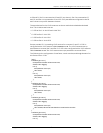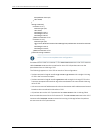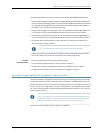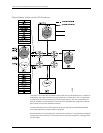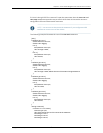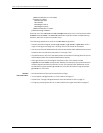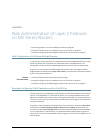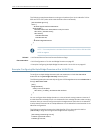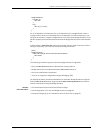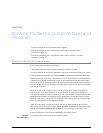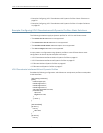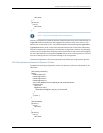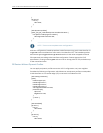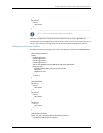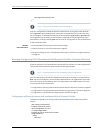
bridge-domains {
bd-vlan–5 {
vlan-id 5;
}
bd {
vlan-id [ 1–4 6–10 ];
}
}
If a VLAN identifier is already part of a VLAN identifier list in a bridge domain under a
routing instance, then you must delete the VLAN identifier from the list before you can
configure an explicit or “regular” bridge domain. Also, the explicit bridge domain will not
performproperly unless it has the samename as thebridge domainin theVLAN identifier
list.
In other words, if sales-vlan-100 was part of a bridge domain VLAN list and you wish to
configure it explicitly, you must use the same naming convention:
[edit]
bridge-domains {
sales-vlan-100 { # You must use this name explicitly
vlan-id 100;
}
}
The following limitations apply to automatic bridge domain configuration:
•
Only one vlan-id-list statement is allowed in a routing instance.
•
Bridge options are not supported with the vlan-id-list statement.
•
Only trunk interfaces are supported.
•
There is no support for integrated routing and bridging (IRB).
You display the status and other parameters for automatic bridge domains configured
with the vlan-id-list statement using the same show l2-learning instance command as
used for individually configured bridge domains.
Related
Documentation
• MX Series Ethernet Services Routers Solutions Page
• Bulk Configuration of VLANs and Bridge Domains on page 59
• Example: Configuring VLAN Translation with a VLAN ID List on page 59
61Copyright © 2010, Juniper Networks, Inc.
Chapter 5: Bulk Administration of Layer 2 Features on MX Series Routers



